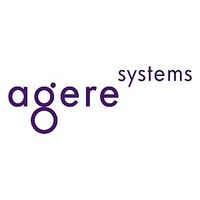T7256 Agere Systems, T7256 Datasheet - Page 52

T7256
Manufacturer Part Number
T7256
Description
(T7234 - T7256) Compliance
Manufacturer
Agere Systems
Datasheet
1.T7256.pdf
(60 pages)
Available stocks
Company
Part Number
Manufacturer
Quantity
Price
Company:
Part Number:
T72561ML
Manufacturer:
LUCENT
Quantity:
19
Company:
Part Number:
T7256A-ML
Manufacturer:
SAMSUNG
Quantity:
4 443
Part Number:
T7256ML2
Manufacturer:
LUCENT
Quantity:
20 000
Part Number:
T7256MLZ
Manufacturer:
LUCENT
Quantity:
20 000
T7234 Single-Chip NT1 (SCNT1) Euro-LITE Transceiver
Questions and Answers
Miscellaneous
Q44: Is there a recommended method for powering the
A44: The T7234 is not extremely sensitive to power-
Q45: What are the filter characteristics of the PLL at
A45: The –3 dB frequency is approximately 5 Hz,
Q46: Can the T7234 operate in the LT mode?
A46: No, the T7234 is optimized for the NT side of the
Q47: Can you provide detailed information on the
A47: The IDLE power of the T7234 is typically 35 mW.
48
T7234? For example, is it desirable to separate
the power supplies, etc.?
supply schemes. Following standard practices of
decoupling power supplies close to the chip and,
if power and ground planes are not used, keeping
power traces away from high-frequency signals,
etc., should yield acceptable results. Separating
the T7234 analog power supplies from the digital
power supplies near the chip may yield a small
improvement, and the same holds true for using
power and ground planes vs. discrete traces.
Note that if analog and digital power supplies are
separated, the crystal power supply (V
should be tied to the digital supplies (V
See the SCNTI Family Reference Design Board
Hardware User Manual (MN96-011ISDN),
Appendix A for an example of a board layout that
performs well.
the NT?
peaking is about 1.2 dB.
loop and cannot operate in the LT mode.
active and idle power consumption of the T7234?
The IDLE power will be increased if CKOUT or
the TDM highway are active. The discussion
below presents accurate numbers for adding in
the effects of CKOUT and the TDM highway.
When considering active power measurement fig-
ures, it is important to note that the conditions
under which power measurements are made are
not always completely stated by 2B1Q IC ven-
dors. For example, loop length is not typically
mentioned in the context of power dissipation, yet
power dissipation on a short loop is noticeably
greater than on a long loop. There are two rea-
sons for the increased power dissipation at
shorter loop lengths:
1. The overall loop impedance is smaller, requir-
ing a higher current to drive the loop.
(continued)
(continued)
DDO
DDD
)
).
2. The far-end transceiver is closer, requiring the
The following lab measurements provide an
example of how power dissipation varies with
loop length for a specific T7234 with its
15.36 MHz CKOUT output disabled (see the fol-
lowing table for information on CKOUT). Note that
power dissipation on a 0-length loop (the worst-
case loop) is about 35 mW higher than on a loop
of >3 kft length—a significant difference. Thus,
loop length needs to be considered when deter-
mining worst-case power numbers.
Table 13. Power Dissipation Variation
* This is the configuration used by some IC manufacturers.
Also, in the case of the T7234, the use of the out-
put clock CKOUT (pin 17) needs to be considered
since its influence on power dissipation is signifi-
cant. Some applications may make use of this
clock, while others may leave it 3-stated. The
power dissipation of CKOUT is shown in Table
14.
Table 14. Power Dissipation of CKOUT
Another factor influencing power consumption is
the S/T-interface data pattern. For example, when
transmitting an INFO 4 pattern with all 1s data in
the B and D channels, the power consumption is
25 mW lower than it is when transmitting INFO 2,
because INFO 2 is worst case in terms of the
amount of +0 and –0 transitions, and INFO 4 is
best case if the data is all 1s. A typical number
would lie about midway between these two.
135
Frequency
near-end transceiver to sink more far-end cur-
rent in order to maintain a virtual ground at its
transmitter outputs.
tive, no far-end transceiver*
CKOUT
(MHz)
15.36
10.24
Loop Configuration
load, ILOSS or LPBK ac-
0.5 kft/26 awg
18 kft/26 awg
6 kft/26 awg
3 kft/26 awg
2 kft/26 awg
1 kft/26 awg
0 kft
Power Due to
CKOUT 40 pF
Load (mW)
21.3
17.7
Lucent Technologies Inc.
February 1998
Power Due to
CKOUT No
Load (mW)
Power (mW)
11.0
9.1
270
270
274
277
285
293
305
278












